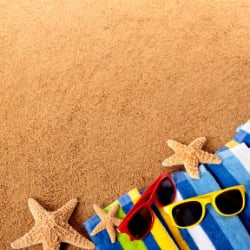
Demystifying sunscreen: it’s in the label
13 July 2012
Some brands call themselves ‘sun tan lotion’, others say they are ‘sweatproof’, ‘waterproof’, or that they can be sprayed on while your child is wet…but can we really trust all these statements? What kind of sunscreen works best to protect your child and your family?
We’re offering some timely tips on what to look for in your next sunscreen purchase.
Reading the label
While it may seem overwhelming, a lot of the information you need to make the right sunscreen purchase is found on the label. The trick is knowing how to read it, and what terms to look for.
Our experts recommend the following:
- Look for sunscreens that are labeled “broad spectrum.” Only broad spectrum sunscreens protect against UVA and UVB rays, and you’ll want protection against both as prolonged exposure to either of these kinds of rays can contribute to the risk of skin cancer.
- Higher numbers do offer better protection—to a point. Health experts recommend using a sunscreen with an SPF of at least 15, however SPF 30 protects against about 97 per cent of UVB rays, while SPF 50 is slightly higher. Although many companies sell sunscreens with SPFs of 65 or even 80 and 100, experts say the added protection is minimal. New U.S. rules mandate that any sunscreen with an SPF higher than 50 will be labeled “50+.” The FDA does not have enough evidence to support the claim that sunscreens with SPF numbers higher than 50 provide better protection than those with SPF values of 15 to 50.
- Any claims of water or sweat resistance on the label must now indicate protection time.Under new U.S. rules, sunscreen manufacturers can no longer label their products as being “waterproof” or “sweatproof”, or call them “sunblock” because such claims “overstate their effectiveness,” according to the FDA. Instead, labels must now indicate how much time, 40 minutes or 80 minutes, that you’ll have full protection benefits while sweating or swimming. Pay very close attention to these guidelines to avoid sunburns and to know when to reapply.
- There are no shortcuts: you need to reapply sunscreen during prolonged exposure to the sun.Sunscreens should be re-applied every two hours, and more often if your child is spending a lot of time in the water.
Sun safety tips
Whether you’re beachside, poolside or lakeside this summer, remember these basic sun safety tips, recommended by the Canadian Paediatric Society (CPS):
- Use “broad spectrum” sunscreens. Choose ones with SPF 30 or higher.
- Limit time in the sun during peak hours. Have fun indoors, especially between the hours of 10 a.m. and 2 p.m., when the sun’s rays are most intense.
- Use extra protection for babies. The CPS recommends wearing protective clothing, hats and staying in the shade and avoiding sunscreen for babies under 6 months of age. However, if adequate clothing and shade aren’t available, you may use sunscreen with SPF 30 or higher on small areas, such as the face and back of the hands. Remember to put sunscreen on baby’s ears, nose, back of neck and legs and tops of feet, being careful around the eyes. Encourage children to drink plenty of fluids, especially water.
- Dress yourself and your child in protective clothing. You can now find swim clothing that has UVA protection built in. Sunglasses and wide-brimmed hats are also recommended.
- Reapply sunscreen often! Every two hours or more if your child is swimming or sweating.
- Be alert for signs that a child is experiencing heat illness and needs to go inside. These include thirst, fatigue, leg or stomach cramps, and cool, moist skin, which can be a sign of heat exhaustion.
- Most importantly, lead by example and remember to protect yourself from the sun as well.
References
Sun safety. The Canadian Pediatric Society.
It’s Your Health: Sunscreen. Health Canada.


